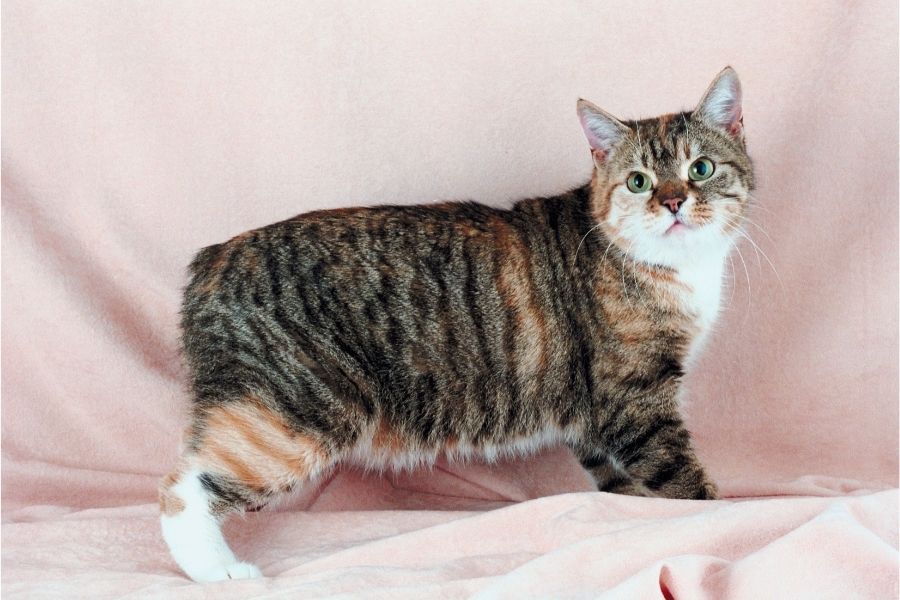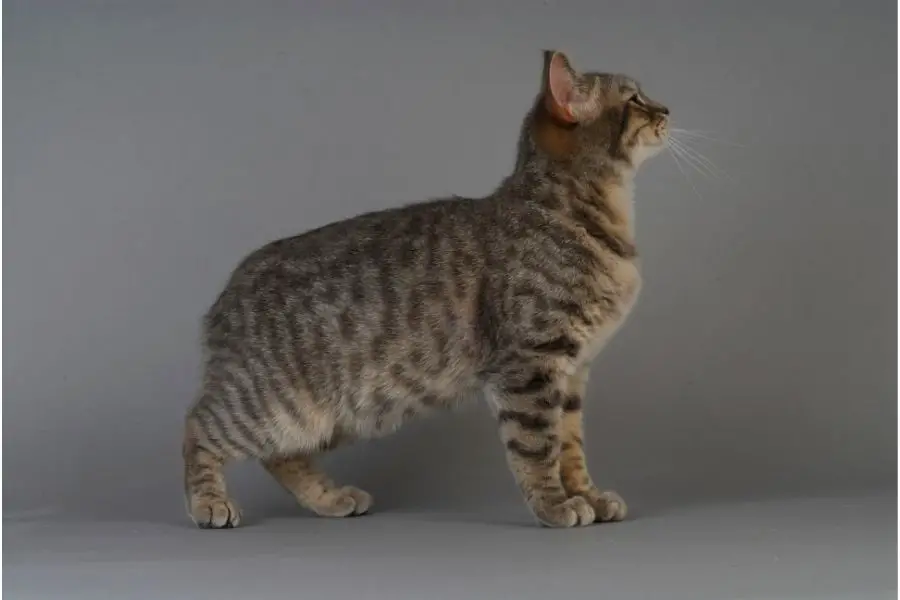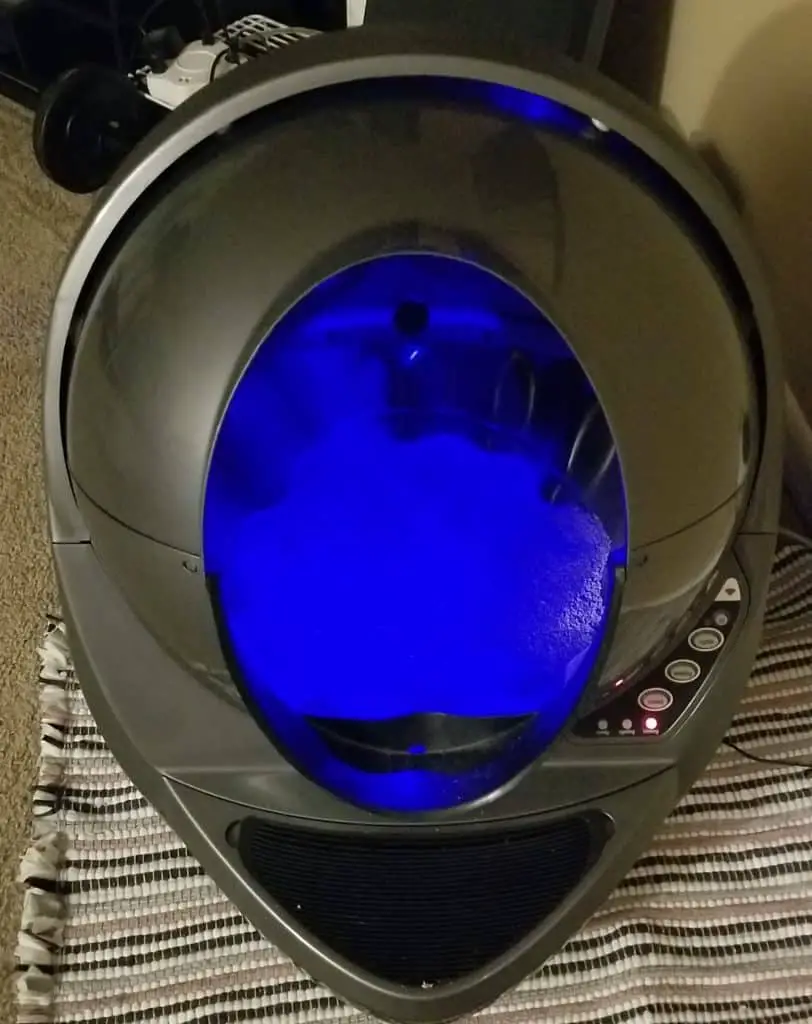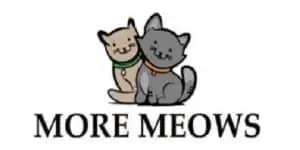More Meows is an Amazon Associate. As an Amazon Associate we earn from qualifying purchases. We may also earn commissions if you purchase products from other retailers after clicking on a link from our site.
Manx cats are small but spectacular! I built a list of 14 reasons that Manx cats are the best. Read the list and decide which reason is your favorite!
1) Are Manx Cats Good Hunters?
Manx cats are excellent hunters, and their reputation for catching mice and rats is well known. In addition, their superb jumping ability and general agility and intelligence make them highly effective hunters.
This ability was probably one of the main reasons these cats were adopted by people and traveled around the world.
They are alert and react to unfamiliar noises around the house and may even go on the attack or growl. But, if they see their owner is not disturbed, then they will settle back down and resume their nap in your lap!
So if you have a Manx, you certainly won’t need a watchdog!
2) Manx Cat Shows
The Manx was one of the very first cats ever to be shown! In the late 19th Century, when English cat lovers began some of the very first cat shows, the Manx was one of the earliest breeds to be shown!
This picture of ‘Silverwing’ belonging to Mr. Ward is a very early picture of his Manx on show and on a leash!
Bonhaki was the first Manx champion cat, and he was a silver Manx tabby that achieved this award in the year 1900. People have been breeding Manx cats in the USA since the 1930s.

3) Manx Cat History
The legends of Manx cats go back hundreds of years. This may have been due to the long history with people. However, some reports of these cats went back as far as the 1500s and earlier!
There is even a famous story that the Manx lost his tail at the time of Noah’s Ark! The story goes that the ark door was closing just as the Manx ran in, and sadly the door severed his tail.
One of the more modern versions is that this breed found its way on the shipping routes between Phoenicia and Japan. As rats were a big problem, cats were often taken on board ships to kill them and other vermin that would attack goods on board. This theory postulates that Japanese corkscrew-tailed cats may have been used on these vessels.
Other references cite its origins in the Spanish Armada that sank around 1588 off the Isle Of Man.
The generally accepted theory is that these cats originated from the Isle Of Man around the 1700s and that the Manx is a descendant of an African Wild Cat. In an enclosed environment, the genetic mutation that causes ‘tail-less-ness’ resulted from inbreeding on the Island.
They are much beloved on their home island, and coins, stamps, and even company logos feature their image, and you can readily purchase Manx merchandise when visiting the Isle Of Man.
When the Cat Fancier’s Association was founded in 1906, the Manx was one of the founding breeds!
4) Manx Cat Varieties
While many people believe that a Manx only has the characteristic stumpy or no tail at all, there are actually four versions of their tail that can be seen in Manx cats.
- The Rumpy – totally tailless
- The Rumpy Riser – A slight rise at the base of the tail
- The Stumpy – Has a slight partial tail
- The Longy – This is an almost normal, full-length tail
While the tailless gene is the dominant tail configuration, Manx kittens can be born with any of these variations and still be recognized as a Manx.
5) Manx Cat Personality

Manx cats are well known for their amazing personality and are well-rounded socially, not just physically. They get along very well with kids and other cats and dogs. They are great with people, and even though they may take a while to warm up to strangers, they’ll be around you all the time once they trust you.
Many Manx owners will find their cats following them around the house and seeking their owner’s company at every possible opportunity.
They are very friendly felines and enjoy their conversations! Yes, the Manx is a highly chatty little kitty and can hold a lengthy discussion on various topics with their people!
While other cats may not find solitude likable, the Manx is quite happy in their own company, and while they are very attached and responsive to their human owners, they do not require constant company to be satisfied.
When alone, they will often find high spaces like refrigerator tops or windows to sit on or nap in the warm sunny places in the home. When their owners are at home, expect your Manx to follow you around and be interested in what you are doing, especially if it involves water.
6) Are Manx Cats Playful?
Yes, Manx cats are playful. Manx cats will frequently dash around the house with a case of the zoomies. This is also one of the reasons Manx cats make such great house cats, especially with children.
Kids have natural energy, and the Manx cats are the same. Jumping, fetching, and playing with toys suit the Manx cat’s active and intelligent nature.
They also love getting in and out of spaces, so cupboards are quite popular places to hide and jump out, especially if it involves opening and closing doors!
Here are some of my favorite cat products
In addition to checking out some other More Meows articles, I hope you’ll check out some of my favorite cat products as well. These are affiliate links, so if you end up using them, I’ll get a commission at no extra cost to you. These are the products I really do find most helpful.
Litter Box: I started out with normal, traditional litter boxes for my cat. Then, I tried this automatic litter box on Amazon (affiliate link), which helped reduce the litter upkeep. Finally, I am now a believer in the Litter-Robot 3 Connect on Amazon (affiliate link). This robotic litter box is not for everyone based on the price tag, but for me the benefits (very little upkeep, works efficiently, clean, mobile app) far outweighed the cost.

Cat Tree: I have purchased a couple of this Amazon Basics Cat Tree on Amazon (affiliate link). My cat spends a lot of time on and around this cat tree, which I position near my sofa. She uses the scratching posts on this cat tree multiple times a day, which means she is not scratching the sofa instead.
Cat Water Fountain: I love this cat water fountain on Amazon (affiliate link). There are three main benefits to having a water fountain like this for your cat. The first benefit is that it keeps water running so that your cat doesn’t need to drink still water. The second benefit is that it filters the water. The third benefit is that it will keep your cat hydrated!
7) Are Manx Cats Smart?
Manx are smart and curious cats and have been known to get themselves into trouble by opening doors, taps, and cupboards. They enjoy playing games like fetch, can be easily trained to do tricks, and walk on a leash.
Manx cats have even been known to bury their toys as their canine counterparts do.
These cats need stimulation, so puzzles with kibble rewards and other games that test their intellectual abilities are an excellent idea for them! As with most cats, they can learn through observation and mimic actions by watching!
They can unlock unsecured doors, so if you don’t want your Manx to get to anything, make sure it’s kept under lock and key!
8) Do Manx Cats Walk Funny?
One of the most notable characteristics of the Manx cat is its walk. To many, it looks like a rabbit’s hop, which gave rise to the myth that they were a cross between a cat and a rabbit. However, the hop results from a shorter spine, and their back legs are longer than the front ones.
These physical attributes give them a ’rounded’ shape and their characteristic hopping motion.
The lack of tail does not affect their balance at all, and they love to jump! Whether it’s up to high perches like fridges or down, they seem to enjoy jumping, and this may be due to the slightly longer back legs!
9) Do Manx Cats Like Water?
Considering the Manx cat’s origins on the Isle Of Man and the sailing ships, they love to play with water. Manx cats have a natural familiarity with water, and while other cats will run from water, Manx cats are open to playing in it.
Splashing it around, fishing in your pond or fountain, and even opening faucets is fun for them so if you don’t want to find your bathroom underwater, make sure your taps are tightly closed!
10) The Manx Cat Has A ‘Round’ Appearance
Manxies are one of the few round cats! A round head, eyes, and rounded ears are all characteristic of this breed. The longer hind legs and shorter forelegs also contribute to their round appearance.
Despite this, they are solidly built cats and are often heavier than they look. In addition, they are stocky and can weigh up to 14lbs when fully grown.
11) Manx Cat Lifespan
A Manx cat in good health can live up to 13 years or longer, especially if kept indoors. But, like many cats, they like to roam and risk contracting diseases or getting injured in fights with other cats.
The other risk is, of course, being run over, so if you live in a city, instead, make sure your Manx has lots of window views and a secure outside area that they can use.
Their quiet nature is ideally suited to apartment dwellings, and if you get complaints about meowing, then perhaps you should get new neighbors! These cats are mostly quiet except when chatting with their owners!
Manx cats also love their food, so it is important to keep an eye on the food portions. Because of their stocky build, Manx cats can often gain weight if they are over-fed or don’t get enough exercise. A fully-grown Manx can weigh up to 13lbs, so they are not small cats by any means.
Because they make such great indoor cats, they tend to live long, happy lives and don’t have too many medical issues. However, the genetic mutation that gives them their tailless look can cause problems if the spine is too short.
Manx cats have some known medical conditions like spinal Bifida and problems around urination, bowels, and digestion. Most of these issues can be avoided by not breeding two completely tailless cats. This condition is called Manx Syndrome and was one of the driving forces behind the Manx Cat Genome Project discussed later in this post.
As such, many breeders and Cat Associations have imposed strict breeding rules to avoid these issues occurring. If you are getting a Manx kitten, it’s better to wait until they are about four months old before bringing them home, as this is when any congenital disabilities would be evident.
12) Manx Cat Appearance
Unlike other breeds, the Manx comes in a cornucopia of colors! The most common colors are tabby, tortoiseshell, calico, and solid colors. Still, there are also the ticking, smoke, and shaded variations, and there have also been reports of Himalayan colored Manx on the Isle of Man.
Manx has a thick double coat, and this will require brushing regularly to maintain its condition. During Spring and Autumn, you may need to touch the coat a bit more to remove the dead hair.
Manx cats also have a variety of coats, with the long-haired versions known as the Cymric; there is also a curled version of the skin known as the Tasman Manx, with coat characteristics like the Rex breed.
13. Manx Cat Genetics
In 2015, researcher Rachel Glover from the Isle Of Man launched the Manx Cat Genome Project so that scientists could map the Manx genes and better understand the breed’s genetic code.
As a computational biologist, she sought to isolate and analyze the genes responsible for the tail mutations, as well as determine whether these mutations were unique to the breed, the genes involved, which genes contributed to the tail mutation, and whether the genetics were responsible for health issues with the breed.
One of the main motivations behind this was to identify which cats should not be bred to avoid a fatal condition called Manx Syndrome.
Manx Syndrome is where breeding between rumpy’s and stumpy’s causes the spine to be too short, and cats with this condition don’t live much beyond three to four years.
In order to keep the breed healthy, it was vital for scientists to provide data on this condition. With the research successfully completed, she sent this to the 99 Lives Cat Genome Sequencing Project at the University of Missouri and the National Center for Biotechnology Information.
The first Manx cat to have her entire genome sequenced in 2016 was named Bonnag, and she was only the second cat of ANY breed to receive this level of study, with the first being an Abyssinian cat in 2014.
14) Koko The Gorilla Adopted Three Manx Cats
The world-famous Koko the Gorilla adopted a Manx kitten! This gorilla knew more than 100 words in the modified American Sign Language, and, in 1984, on her twelfth birthday, Koko chose a tailless grey-and-white kitten named ‘All Ball.’
She named the kitten “All Ball” as she liked to rhyme her words, and the kitten looked like a ball when she was running around – due to the Manx’s rounded shape. Sadly, All Ball was run over later that year.
However, after All Ball died, Koko adopted two more Manx cats called Lipstick and Smokey, and the last cat, named Smoky, was her companion for 20 years!
Conclusion
Manx cats are awesome. This list shows 14 reasons why Manx cats are the best. Some of those reasons are the Manx cat’s hunting ability, their playfulness, and their intelligence. If you enjoyed this article, please check out the articles below:
- 8 Most Fancy Cat Breeds (Special Cat Breeds): Click Here To Read Article.
- Do Cats Like When You Talk to Them? (Best Answers): Click Here to Read Article.
- Are Tabby Cats Rare? (Explained Super Simple): Click Here to Read Article.
